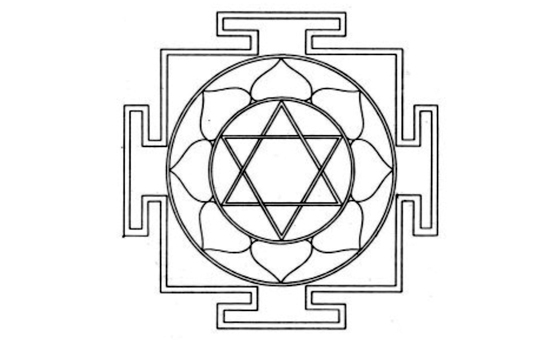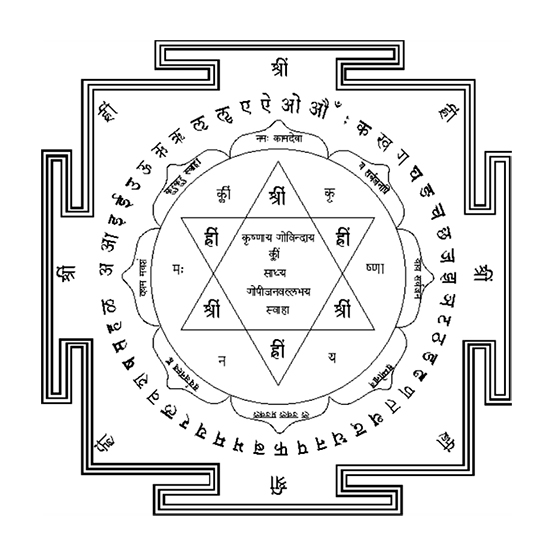Yoga studios are
everywhere, even in countries like Iran and Saudi Arabia, where they have been
introduced through the backdoor via the Ministry of Sports. A few months ago, I
heard a thoughtful lecture by Nouf Marwaai, Saudi Arabia’s first certified yoga
instructor, and met others who had the most heartening stories to tell of yoga
in Iran. And of course, June 21 is celebrated as the International Day of Yoga
and promoted by the United Nations as a celebration of global health, harmony
and peace.
Yoga initially
appeals for it is good for physical health. But very soon, the practitioner realizes that the asanas have an
influence on the mind, and as the mind calms and the practitioner become more
reflective, the question of who the individual is comes to the fore.
Yoga is not just the yoking of mind and body as is often claimed, but, more
deeply, it is the yoking of the mind and the self. The body is merely the first
step in this ladder of gradual ascent. [1]
The journey to the center
of being does not proceed the same way and with the same speed for all. For
those whose mind is stuck in physicality, perhaps the benefits of yoga are
limited. But for others it is a path of astonishing
self-transformation and access to capacities one did not know one
possessed.
Shiva-Shakti yantra
Most practitioners of
yoga are familiar with its symbol of two interlocked triangles, but they
generally don’t know the deeper meaning of the symbol. Many see them
erroneously as nothing but the joining of the feminine and the masculine
principles.background:white'>At a deeper level, the
downward pointing triangle is the symbol of transformative energy (embodied by
Nature, Shakti) whereas the triangle pointing upwards is the spirit or
consciousness (शिव, Śiva, the experiencing
Self).
 An elaborated Shiva-Shakti yantra
An elaborated Shiva-Shakti yantra
But a system of oppositions
obscures as much as it reveals. How do the opposites engage with each other?
And is the engagement two-sided?background:white'>Also what does consciousness mean? To the individual it
is the contents of the mind and of all the things that are happening in the
universe what sticks in the mind depends on one’s life-history and the nature
of the cognitions, and the quality of the experience depends of mood and
attention. So the experience of consciousness is a complicated matter which
depends on a variety of things. At the deepest level, it is not the contents
but rather the light of
awareness that shines on things.
One way to look at the
mind-body interaction is in terms of the physical and psychological elements.
If one only looked at the physical elements, one must consider earth, water,
fire, air, and akasha (ākāśa आकाश, ether).
These are not to be taken literally. Earth is solidity, water is flow, fire is
sublimation, air is movement, and akasha is ether, the manifold representing
contact between mind and body.
In the elemental
meaning of the yantra, the downward triangle represents water (आपः), whereas the upward triangle represents fire (तेजस् or अग्नि). The
intersection of the two is in a dynamic interplay that may be viewed at
different planes.
The circle around the
triangles represents movement which stands for the action of the element air
(vāyu, वायु).background:white'>The square is the
exterior limit of the yantra and symbolically, it represents the element earth
(पृथिवी), where the four sides are the four cardinal
directions.
The lotus is both a
symbol of purity and variety and it is the emanation of light out of akasha (आकाश). When we speak of purity, we mean the Self,
which is not stained by its interaction with materiality, because it is not in
time and space.
At the center of the
yantra, is an invisible dot (बिन्दु), from
where the construction begins that ends with the outer square. At the grandest
scale, this is the process of cosmic evolution, starting from the subtle and
ending with embodiment.background:white'>Other deities along with
their consorts may be identified with the two triangles as in the yantra below
where the deities are Krishna and Radha.
 Krishna and Radha yantra
Krishna and Radha yantra
Interaction between matter and consciousness
The interlocked triangles
don’t tell you whether the spirit itself arises out of the material ground (as
is commonly assumed in modern science) or if the spirit is different from
matter (in which case you need to confront the paradox of how two unrelated
categories can interact). These diverging positions are responsible for a lot
of misunderstanding of yoga amongst laypersons and scholars alike.
Within the yoga tradition,
there is no confusion. The tradition has a very
subtle understanding of the interaction between matter and consciousness
[2].
The Śrī-yantra is a further
elaboration of the interlocked-triangles symbol that represents the cosmos both
at the cosmic and the personal levels [3]. As one of the most famous symbols of
esoteric spiritual knowledge, it needs much insider knowledge to appreciate all
its deeper meaning. In it, consciousness (Śiva) is shown as an infinitesimal
dot in the middle.
The interaction between
matter and consciousness is postulated in terms of an observation process
called dṛṣṭi-sṛṣṭi (creation through observation), which is
consistent with a world governed by laws [4]. A meditation on the symbol of
yoga opens doorways to universal spiritual knowledge (सनातन धर्म).
Notes
1 The Yoga system is
complementary to other ways of obtaining knowledge, but it is the pre-eminent
way for obtaining spiritual knowledge. See my books Mind and Self and Matter
and Mind where this point is further elaborated.
2 S.
Kak, Play of consciousness.
3 For further information on
the Śrī-yantra, see my essay The Great Goddess
Lalitā and the Śrī Cakra. Brahmavidya: The Adyar
Library Bulletin, 72–73: 155–172, 2008–2009.
4 For further information on
the interaction between mind and matter read Artificial
intelligence, consciousness, and the self by author.
Article
was first published here eSamskriti has obtained permission from author to
share.
To read all articles
by Author
Also read
1 Sri
Vidya Mantra: Unravelling the Cosmos
2 The
Tibetan Sand Mandala
3 From
Yog to Yoga
4 Zero
and Decimal invented to explain the structure of the universe by Yogis